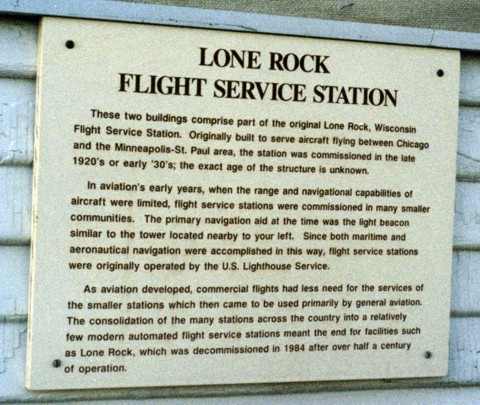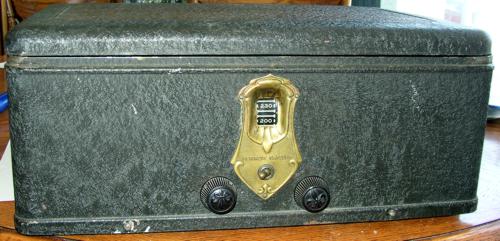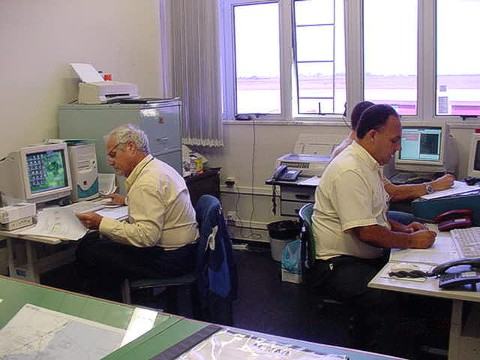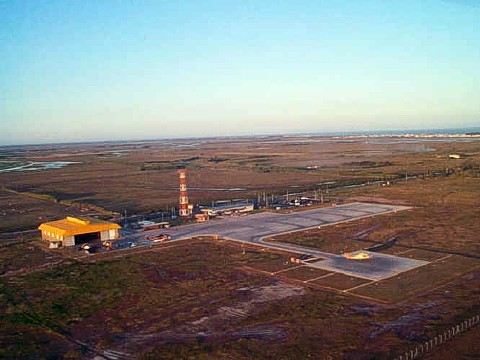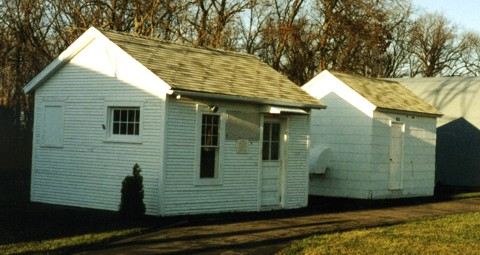
Mauston Aeronautical Light Station, Wisconsin, 1920’s
This picture is of the two buildings that comprised the Mauston Aeronautical Light Station in Mauston, Wisconsin. It was in that location from the early to mid 1920’s to approximately 1928. At that time, Mauston was decommissioned and the buildings moved to Lone Rock, WI.
The building on the left was the actual facility. The one on the right was the generator room. Sometime in the late 1940’s or early 50’s, the facility was replaced by a larger building, but the original facility building was maintained and used as a storage room. The generator building continued to house the emergency generator for Lone Rock FSS (LNR) right up to the day the facility closed. Around 1985 both buildings were again moved, this time to Oshkosh, WI and the EAA’s “Pioneer Airport” exhibit, part of the EAA museum.
______________
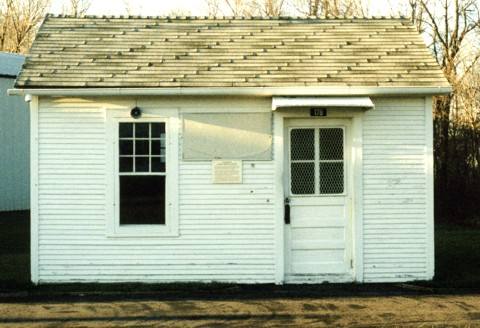 Another view of the original Mauston/Lone Rock FSS facility building. Notice the plaque on the front wall (see below). The interior has been restored to what it looked like in the late 1930’s, complete with teletype and old radio equipment. There is also a self guided recorded audio tour narrated by Ben Silko, a former LNR FSS specialist who retired in 1977.
Another view of the original Mauston/Lone Rock FSS facility building. Notice the plaque on the front wall (see below). The interior has been restored to what it looked like in the late 1930’s, complete with teletype and old radio equipment. There is also a self guided recorded audio tour narrated by Ben Silko, a former LNR FSS specialist who retired in 1977.
______________
